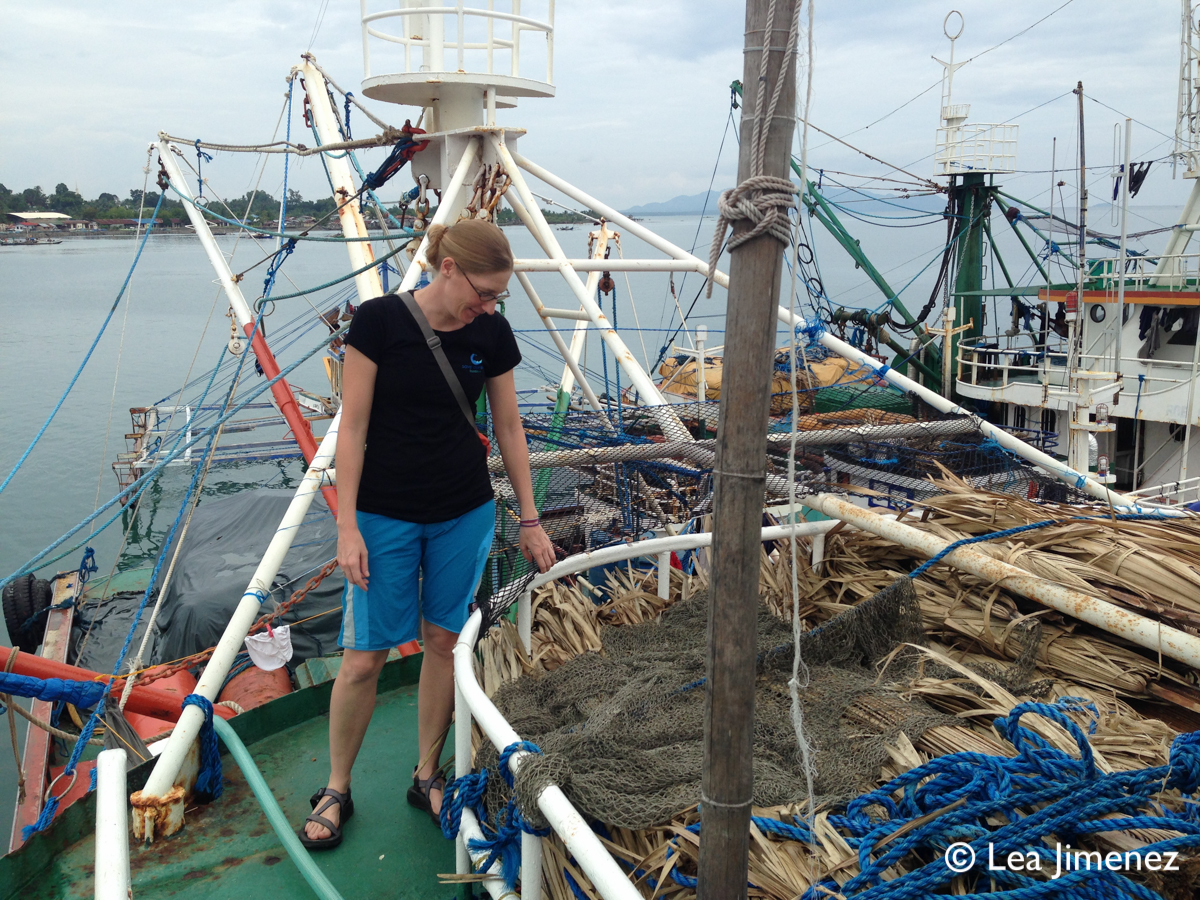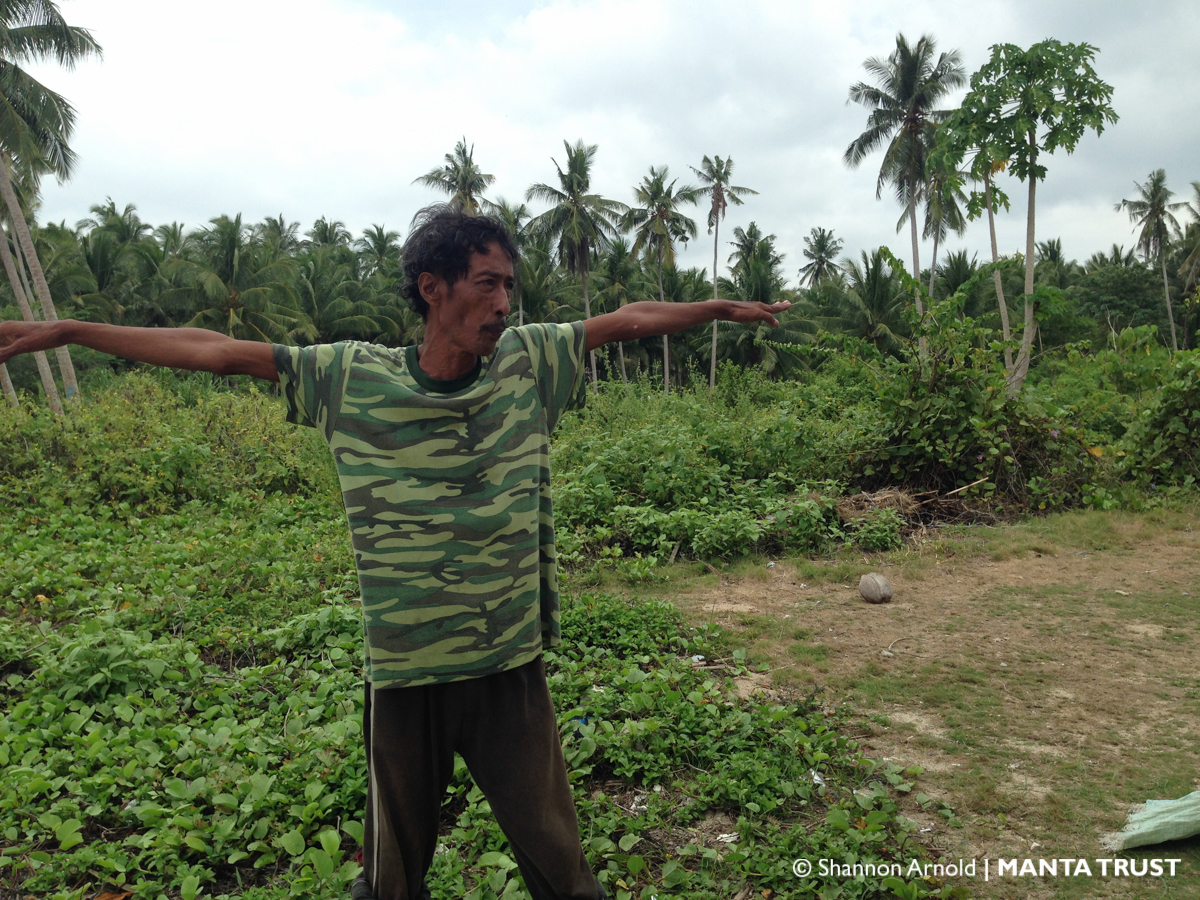Finding the Missing Mantas
It’s Sunday, 05:30am and we are on the beach in a small community in Southern Mindanao (the southernmost island of the Philippines). We can hear the call to prayer from the tiny neighbourhood mosque, while others troupe off to the catholic chapel. The area is a fascinating mix of cultures. It is also a fishing community with a deep history – one that we hope contains lots of information to share about mantas and mobulas.
We have a big black hole of knowledge about mobulid rays here in the Philippines. Whilst we know a lot (well, relatively) about one area in the country where the largest landings of mobulids occur, we know almost nothing about the rest of the country. Are any mobulas or mantas being landed in significant numbers elsewhere? Furthermore, are the small landings happening in many places adding up to have a larger impact on these rays in the Philippines?
This is more than just an interesting debate. In 2011, the Manta Ray of Hope Project was established by several NGOs. The project was the first global assessment of the threat to manta and mobula rays, and provided an overview of manta product trade routes. In project’s final report, the Philippines was identified as one of the key countries supplying significant quantities of ray gill plates to the international trade. This leaves us with a bit of a mystery – if those trade numbers from the Philippines are correct, where are they catching all those mobulids? The one area we know of in the Bohol Sea, where targeted fishing of mobulids is rife, just doesn’t account for the total numbers.
So how do we find where the rest of the mobulids are being caught? Well, that is the role of my research work here in the Philippines. The SOSF is supporting this effort to shed light on the black hole of data that faces us. As it turns out, finding these missing mobulids is an extremely slow process that is progressing bit-by-bit. It takes a lot of leg work and involves searching area-by-area to find out what is really going on in far flung fishing communities. There’s no magic database sitting in the bureau of fisheries or local government offices. Simply put, there are no official numbers on how many mantas and mobulas are being caught (especially not mobulas). We are lucky if the patchy surveys conducted over the last 30 years identify ray species more specifically than as ‘batoids’ – a taxonomic group that includes all rays such as mantas, but also all sawfish, guitarfish, and skates.
I am building relationships with local researchers based in provinces around the country in order to conduct rapid mobulid fishery assessments specific to the Philippines. The assessments will document the fishers’ knowledge of current mobulid landings, as well as the historic trends in those areas. Are they targeting mobulids? Are they selling them? What parts to they sell? What do they do with manta or mobula bycatch? Did they used to catch mobulids? Can they identify the different species? Do they have local names or myths about mantas and mobulas? We ask these alongside many, many more questions, and use maps with the fishers to try to build our information and identify areas where significant catches are being made, and where sightings may be taking place.
It’s still early days, but we are piecing more of the puzzle together with each passing day. We have learnt that mobulas are being caught in many areas of the country as bycatch, that fishers will still target them opportunistically if an aggregation come through, and that mantas caught in nets are still being kept despite their protected status. Interestingly, when we speak to members of the fishing community, the manta’s tails are always brought out to show. Many still have a tradition of keeping the tails pinned above their doorways to ward off ‘Aswangs’, a flying, half-torso woman who is said to eat babies – one of the supernatural beings of the rich Filipino folklore that’s still alive today in some areas.
Manta fishing has a fascinating, centuries-old history here in the Philippines (see the excellent research recently completed by Dr Jom Acebes for her PhD on historic manta fishing). What we are trying to decipher is the shape that it takes in today’s fisheries. Has the traditional food fishery shifted more towards fishing for selling the gill plates? What about the bycatch in the industrial fisheries? Who’s counting that? What trends do the fishers perceive in the number of mantas and mobulas that are still around?
From an international stand-point, the big question we hope to slowly solve is whether there really are substantial numbers of manta and mobula gill plates coming from here in the Philippines and what is the supply chain. There is a lot of pressure to answer these questions soon, as we face signs of declining mobulid populations around the world. We need to ensure that well designed, effective management measure can be put in place and that fishing communities are part of the discussion.
*JM Acebes (2014). Hunting “Big Fish”: A Marine Environmental History of a Contested Fishery in the Bohol Sea. PhD thesis. Murdoch University, Australia


